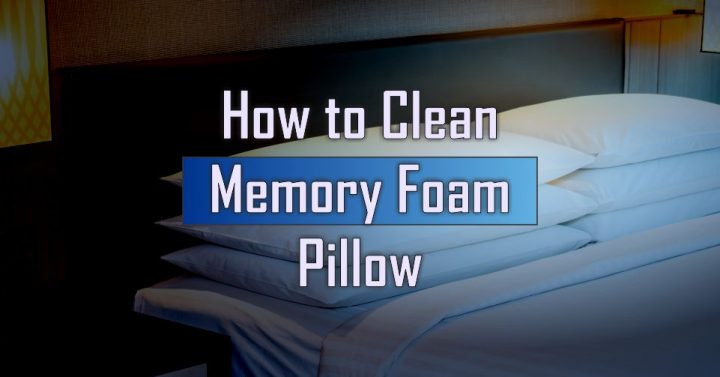
Memory foam pillows are famous for their ability to provide comfort and support while you sleep. However, like any bedding item, they require proper care and maintenance to remain clean, fresh, and free from allergens.
Cleaning a memory foam pillow is not as straightforward as tossing it in the washing machine, as memory foam is sensitive to moisture. In this guide, we’ll walk you through the steps to effectively clean your memory foam pillow while preserving its quality and longevity.
How to Clean Memory Foam Pillow: A Comprehensive Guide
You can get a fantastic night’s sleep on memory foam pillows, but they can get smelly and unclean after some time. The best way to care for your memory foam pillow is as follows:
How to Spot Clean Memory Foam Pillow
- If your memory foam pillow has a small stain, you can spot-clean it with a mild detergent and water solution.
- Add one tablespoon of mild detergent and two cups of lukewarm water.
- Soak a fresh, white cloth in the solution, then squeeze it out until moist.
- Blot the stain with the cloth, working from the outside in.
- Repeat until the stain is gone.
- Rinse the cloth with clean water and blot the pillow again.
- Let the pillow dry in the air.
How to Hand Wash Memory Foam Pillow
- To clean a memory foam cushion with a large or heavy stain, hand wash it.
- Pour warm water into a big sink or bathtub.
- Put a little bit of light soap into the water.
- Submerge the pillow in the water and gently massage it to clean it.
- Rinse the pillow until the water runs clear.
- Squeeze out the excess water from the pillow.
- Do not wring or twist the pillow, as this can damage it.
- Lay the pillow flat on a towel and allow it to air dry completely.
How to Dry a Foam Pillow
- It’s important to dry your memory foam cushion properly after cleaning it.
- Please do not put a memory foam pillow in the dryer, as this can damage it.
- Instead, lay the pillow flat on a towel in a well-ventilated area.
- Allow the pillow to air dry completely.
- This may take several days.
How Often Should You Wash Memory Foam Pillows?
Memory foam pillows should be washed every 6-12 months, depending on how often they are used.
- If you sweat a lot at night or have allergies, you may need to wash your pillow more often.
- If your pillow starts to smell, it is time to wash it.
Tips for Washing Memory Foam Pillow
Here are some additional tips for cleaning memory foam pillows:
- Remove the pillow cover before washing.
- Vacuum the pillow regularly to remove dust and dirt.
- Sprinkle baking soda on the pillow and let it sit for an hour before vacuuming to help absorb odors.
- Do not use bleach or harsh detergents on memory foam pillows.
- Be gentle when washing and drying to prevent damage.
Following these tips, you can keep your memory foam pillows clean and fresh for years.
Conclusion
Cleaning your memory foam pillow is a simple yet essential task to maintain its comfort and hygiene. While machine washing is generally not recommended, spot-cleaning stains and baking soda to eliminate odors can help keep your pillow clean and fresh.
Regular maintenance and a protective pillowcase can extend the life of your memory foam pillow, ensuring you continue to enjoy restful nights of sleep on a clean and supportive surface.
FAQs
How do I remove odors from my memory foam pillow?
The best way to clean memory foam pillows is with a vacuum. Sprinkle baking soda on the pillow and let it sit for an hour before washing to help get rid of smells.
Can I dry my memory foam pillow in the sun?
Wringing a memory foam pillow too hard might be painful. Allow your pillow to dry thoroughly after cleaning. Memory foam pillows can mold and mildew if used before drying. Instead of drying them in a tumble dryer, please keep them in full sunshine for as long as needed.
Can I use a pillowcase to protect my memory foam pillow?
Whether you have a rubber or memory foam pillow, the best way to keep it clean is to use a pillow cover that can be washed in the machine. The cover should be made of a natural fiber that lets air in, like cotton, bamboo, or linen, and it should always be used on top of your regular cushion.
Also Read: How to Wash Mattress Protector- 9 Simple Steps [2023]
